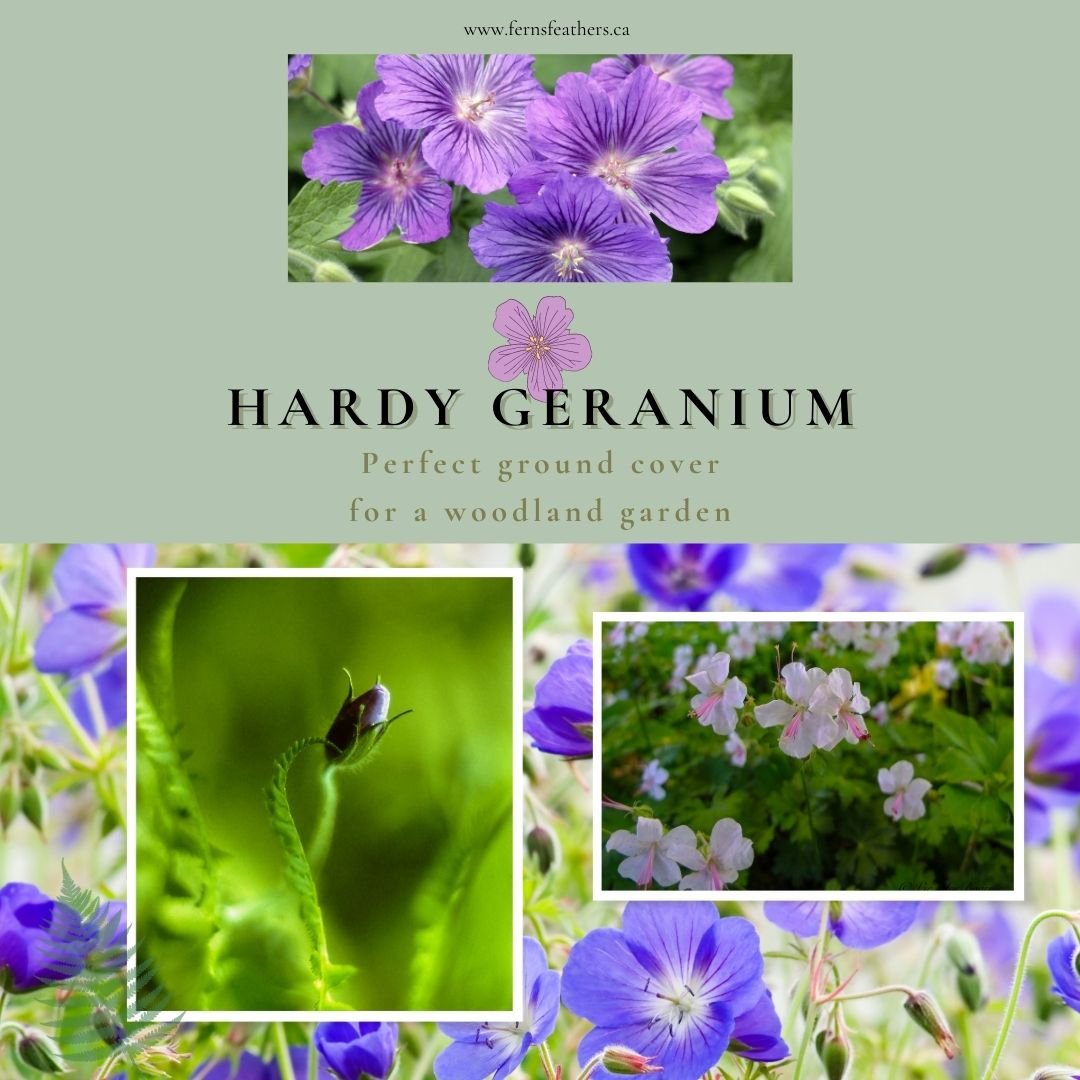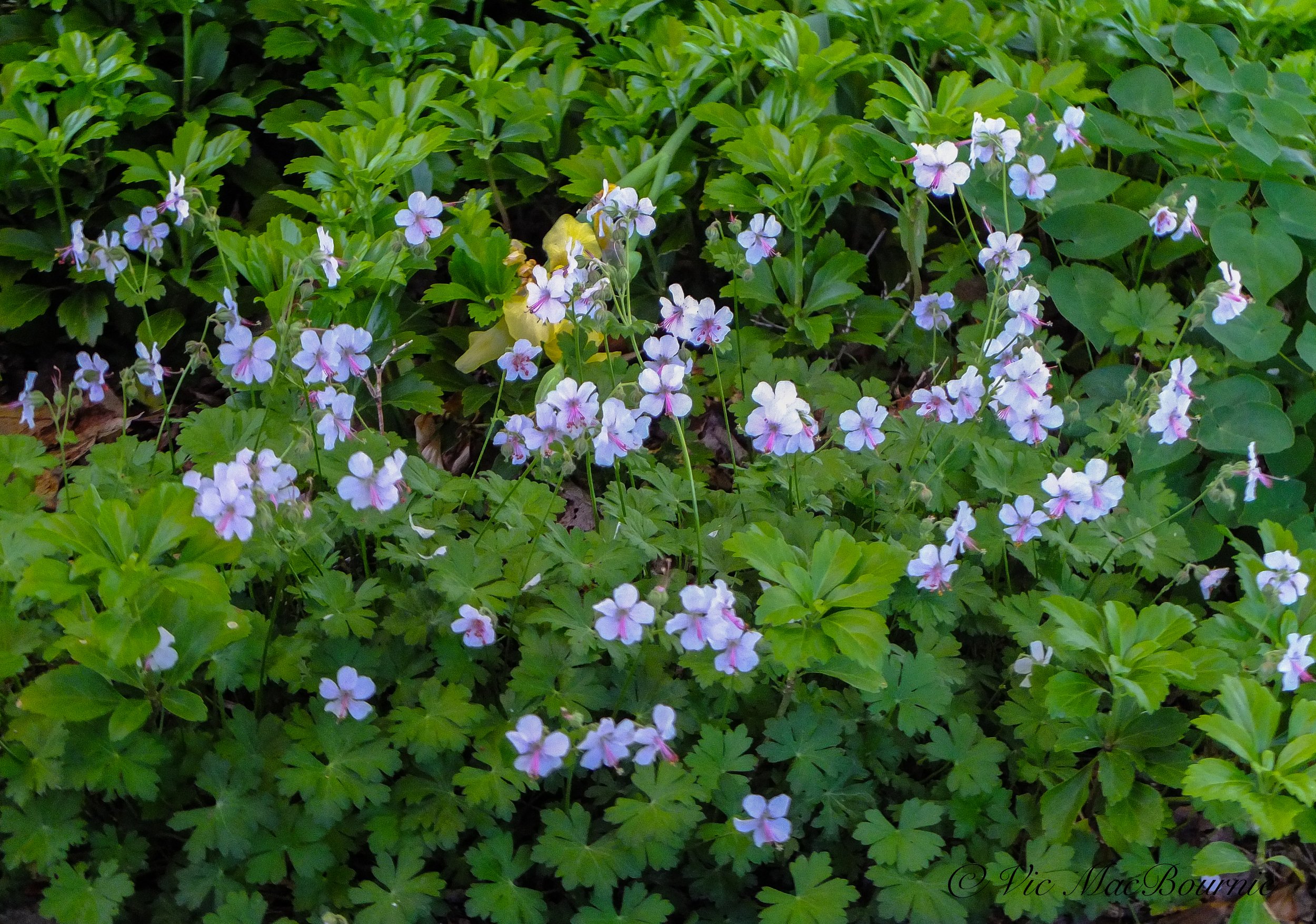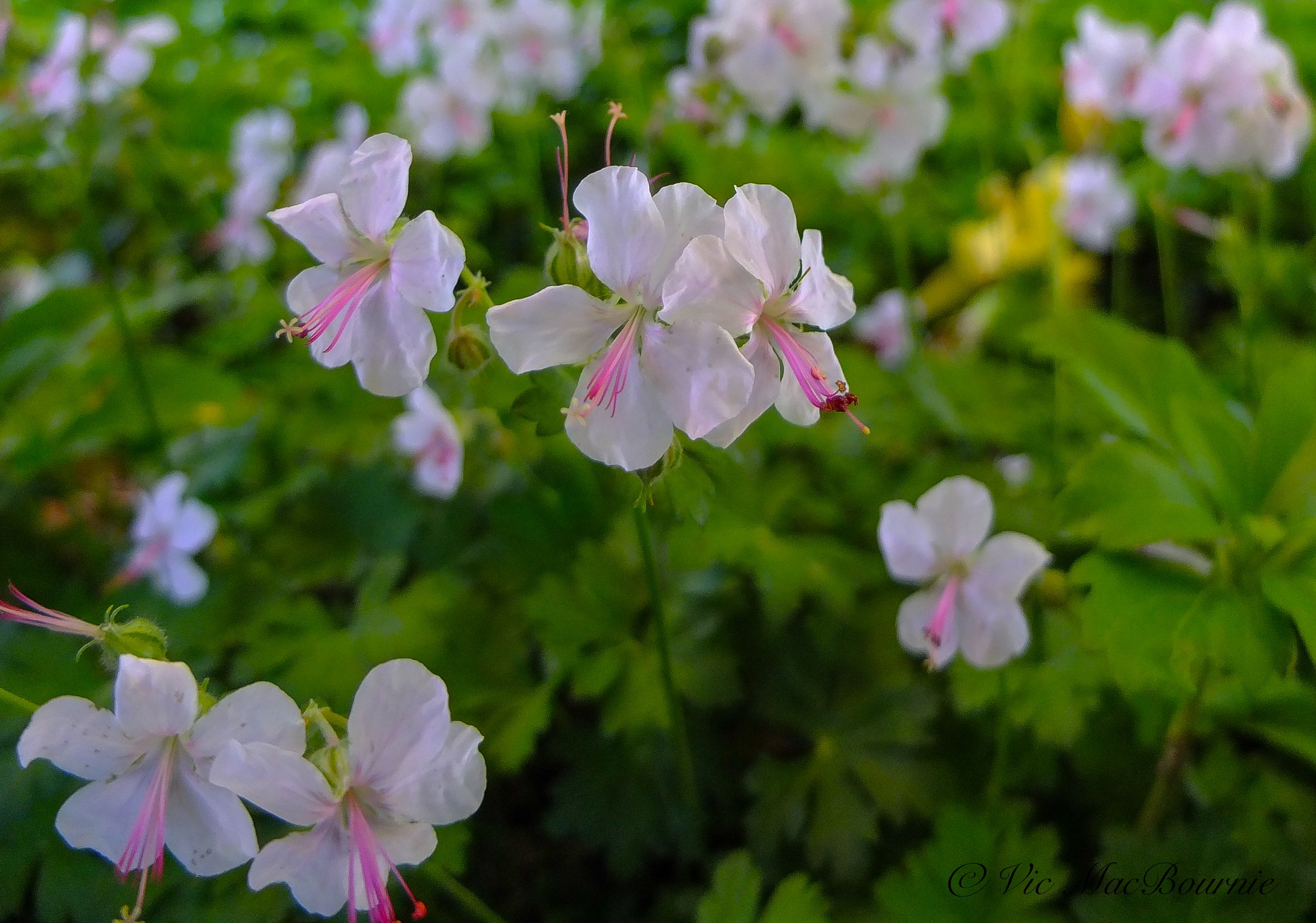Can hardy geraniums be used as a ground cover?
Hardy geranium: A blue-flowered ground cover for the woodland or shade garden
When most of us think about geraniums, the first thing that comes to mind is the bright red and white lollipops that filled window boxes and containers at our parents’ homes.
These annual geraniums known as pelargonium still have a place in our gardens, but they’re not what we’re talking about when we speak of using geraniums as ground covers. The pelargonium is a long-time favourite non-native summer bedding plant that is not cold and frost hardy.
Hardy geraniums, on the other hand, often referred to as cranesbill geraniums, are hardy perennials that can withstand freezing temperatures and return year after year. The primarily bluish-pink flowering perennials are hardy in zones 4 through 8 and can be grown in a rich woodland soil in the garden or in containers. They are perfect to use as ground covers.
Wild geranium, like the one pictured below, can be hardy down to zone 3.
Native wild geranium is ideal ground cover for the woodland garden
The wild geranium (Geranium maculatum) flowers in spring, with tender pinkish-purple blooms that will attract pollinators to the garden while adding delicate colour.
These native, clump-forming plants in the geranium family (Geraniaceae) can form large dense patches in natural woodland openings. These colonies are formed of groups of long-lived clones that have grown from individual plants, according to the University of Wisconsin-Madison.
Although they can form large dense clumps, I would not consider them overly aggressive. They can spread by underground roots as well as through seed. Plants have a loose cluster of basal leaves and flowering stems arising from thick, branched horizontal rhizomes.
It is an herbaceous perennial native to deciduous woodlands of eastern North America, from southern Ontario south to Georgia and west to eastern Oklahoma and the eastern part of the Dakotas in zones 3 to 8.
Also known as Spotted/Wild Cranesbill, alum root, alum bloom and wood geranium, among others, this plant is an easy-to-manage perennial that prefers medium to wet conditions and tolerates most light conditions. Like the more hybrid cousins, it has unique dissected leaves that turn red and orange in the fall and is hardy from zones 3-7.
Wild geranium is generally the showiest of the native geraniums with larger flowers than the other Cranesbill species.
Being a woodland plant, they prefer a well-drained, fertile and moist soil.
Looking for more information on ground covers? Please check out my other posts on ground covers I use in the woodland garden.
• What is the easiest ground cover to grow?
• Bunchberry perfect ground cover for woodland garden
• Three great ground covers for the woodland garden.
• Creeping thyme as a ground cover
Hybrids offer variety of flower colours, shapes and leaf patterns
Depending on the variety you are growing, hybrid, hardy geraniums can perform well in full sun, partial shade and even in dense shade, but they tend to grow best when they receive early morning and afternoon sun,
Don’t expect showy pom pom flowers, however.
In fact, the flowers of cranesbill geraniums are usually quite small in comparison. Although the flowers are small, they are produced in abundance and can almost cover the plants when they are in full bloom.
Many of the varieties flower over several months throughout the summer into fall and some will even begin flowering in late spring.
In her book Gardening with Hardy Geraniums, (see link below) Birgitte Husted Bentdsen shares her knowledge of cultivating the plants and highlights the most garden worthy species and varieties. Expert cultivation advice, including comments on soil preferences and hardiness, is followed by fascinating information on pollination, and failsafe propagation secrets.
Not unlike most ground covers such as hostas, epimediums and ferns, cranesbill geraniums are all about their foliage, which can be particularly impressive, with their intricate colour blotching, veining and interesting leaf patterns.
These are low-growing plants with a dense carpet-like foliage that makes them ideal to use as ground covers.
I have several clumps, including wild native and hybrid varieties, growing in various parts of our woodland/shade garden where their roots slowly spread out over time forming large, attractive ground covers.
The native cranesbill can be found on our forest and woodland floors growing in moist woodsy soils.
The popularity of hardy geraniums can be seen in the large variety that are available. With new ones coming available regularly, there are 70 species and 700 varieties available.
What pollinators are attracted to cranesbill
The importance of native cranesbill to our gardens is evident by the pollinators that are regular visitors. Besides non-native honeybees, bumblebees, a variety of native solitary bees, and syrphid flies are common pollinators to the flowers. In addition, various types of ants and beetles also pollinate the flowers.
How can I keep my cranesbill flowering
We grow cranesbill as a ground cover for its dense foliage and abundance of flowers. You can expect an ultimate height of between 5-36 inches (13-90cm) depending on the variety.
To ensure a tidier and thick foliage as well as lots of flowers, be sure to remove the flower stems after they have finished flowering to prevent them from going to seed.
The plant itself will continue to spread by underground rhizomes. So, unless you are looking to substantially increase the number of plants in a given area, consider removing spent flowers for continuous bloom.
How to care for hardy geraniums
These easy-to-care-for perennials are considered low maintenance plants that, once established, only need to be watered during prolonged dry periods. Mulching the plants in spring will help to create that woodsy soil and prevent excessive moisture loss throughout the summer.
Give the plants a shearing after the first flush of flowering to keep the plants looking their best and to encourage more flowers.
Can hardy geraniums be divided?
The hardy geraniums will grow large over time, with an ultimate spread of between 5-36 inches (13-90cm). Larger clumps can be divided every 3 to 5 years by cutting them in half or quarters in spring or fall.
Consider dividing them in the spring and using the divisions in containers during the summer where they can be properly cared for and enjoyed. Later in the fall, you can plant the healthy specimens back into the garden.




